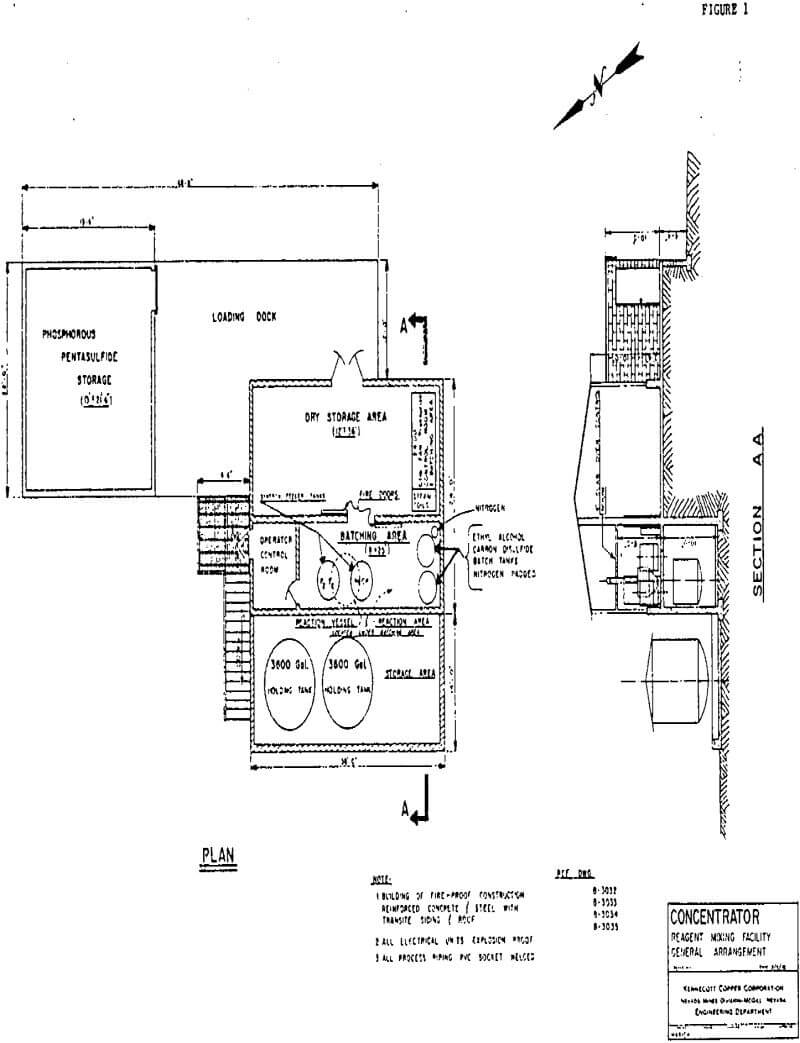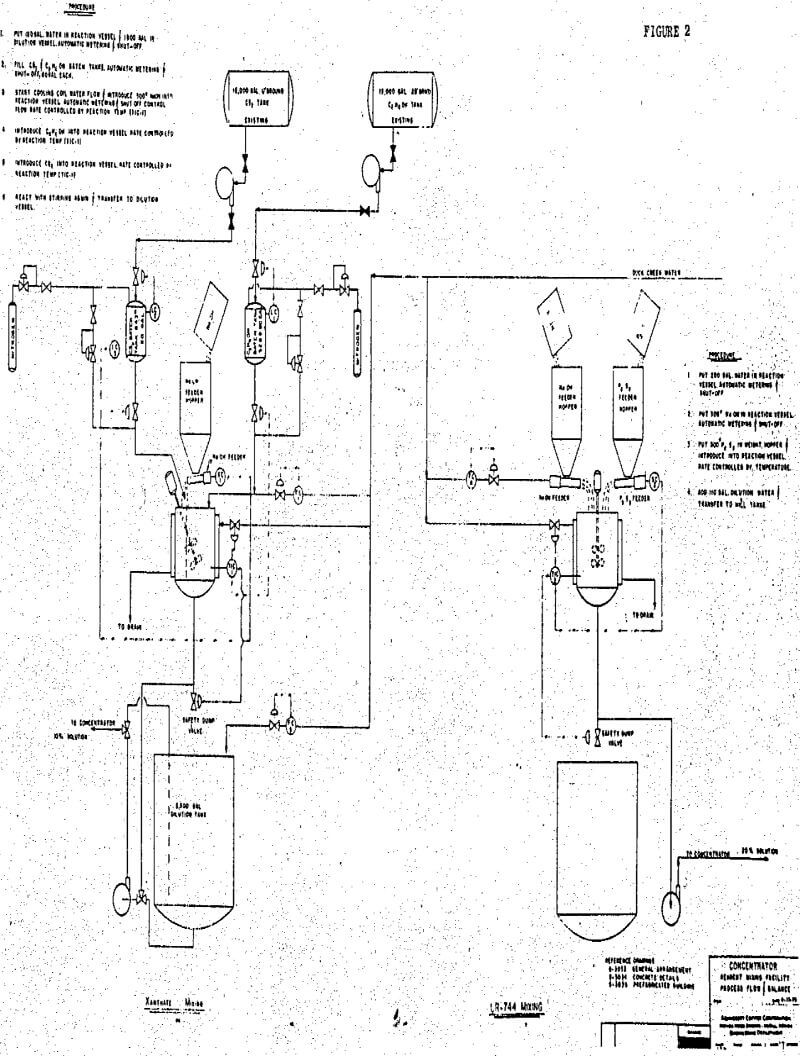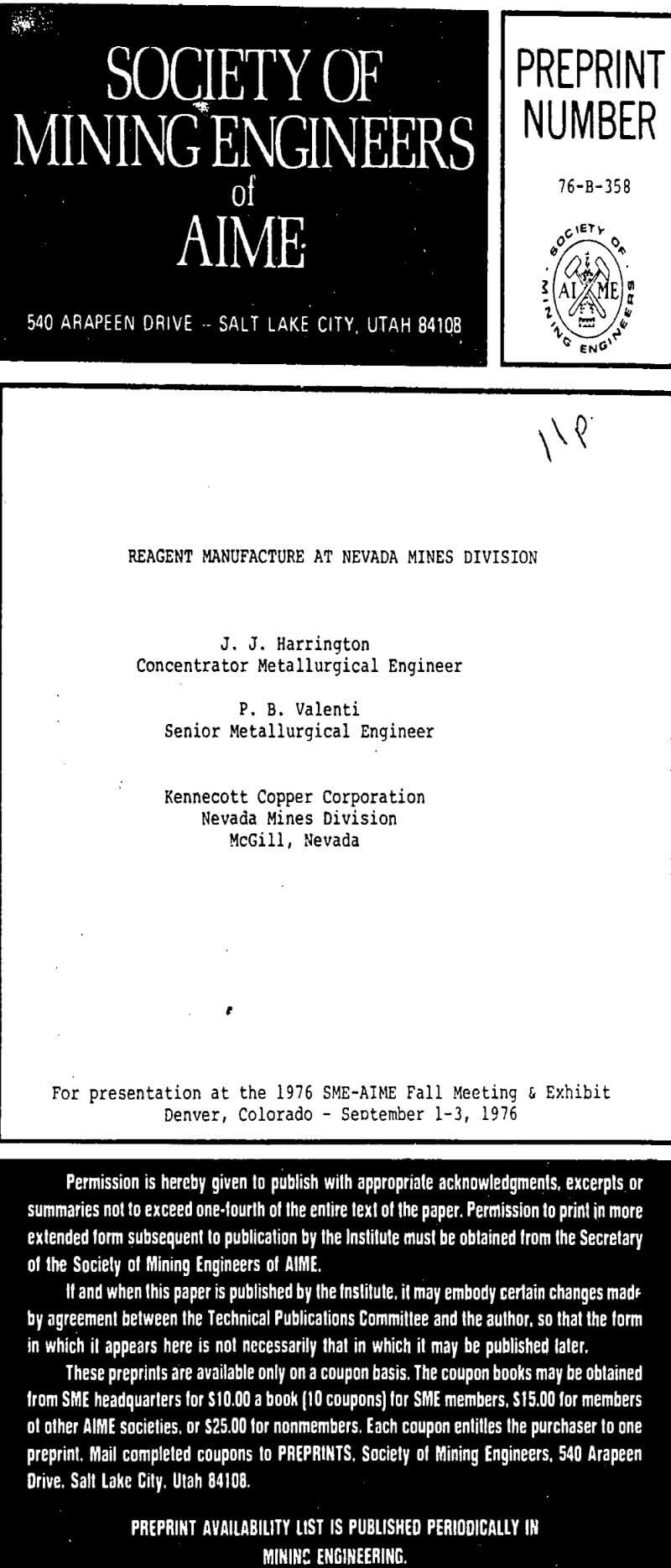Manufacture and mixing of flotation reagents at the mill site provides an economic and convenient method of maintaining a continuous and fresh supply of reagents for concentrator operations. Kennecott Copper Corporation has designed and built a Reagent Mixing Facility which incorporates new ideas in construction and fail-safe operation at its Nevada Mines Division concentrator.
Reagents used at the McGill concentrator include locally manufactured collectors and depressants that are of a hazardous nature or are prepared from hazardous chemicals. Although reagent preparation includes the mixing of sodium ethyl xanthate (Z-4), sodium dithiophosphate (Nokes reagent), sodium cyanide, sodium ferrocyanide, sodium silicate, collector dilution, etc., the occurrence of operational and safety problems in reagent preparation has been historically exclusive to the production of xanthate and Nokes reagent.
The final reaction product is relatively inert; yet, carbon disulfide is an extremely volatile liquid (S.G. 1.26) whose vapors are heavier than air and extremely explosive. Also, ethyl alcohol is highly flammable. Caustic soda is used in the preparation of both xanthate and Nokes reagent. From an operating standpoint, precautions must be taken to avoid skin contact, as well as to avoid batch boilovers resulting from excessive addition rate.
The primary design parameters for the new plant were aimed the following:
Isolation of the entire operation from existing production and human environment. The concentrator is located 350 meters away. The metallurgical test laboratory is the nearest facility located 110 meters distant.
Isolation of the operator during mixing operations from the batching and reaction areas in a pressurized control room. The reagent mixing facility has been successful in achieving safety goal designs in providing maximum protection to operating personnel handling hazardous chemicals. Also, improved reagent economics have been realized due primarily to physical plant scale-up and improved procedure.
Prior to mixing any reagent, the operator performs equipment checks and energizes the ventilation fan and warning light which are a caution to possible passersby to remain outside posted signs located around the facility. The entire control system is interlocked such that no mixing equipment can be energized unless the ventilation and warning systems are operating.
Feed rate of all chemicals is pre-set at optimum levels for sufficient reaction temperatures and safe operation. Temperature control of reactions is provided by cooling coils inside the reaction vessel and is recorded on a chart for each individual batch.



